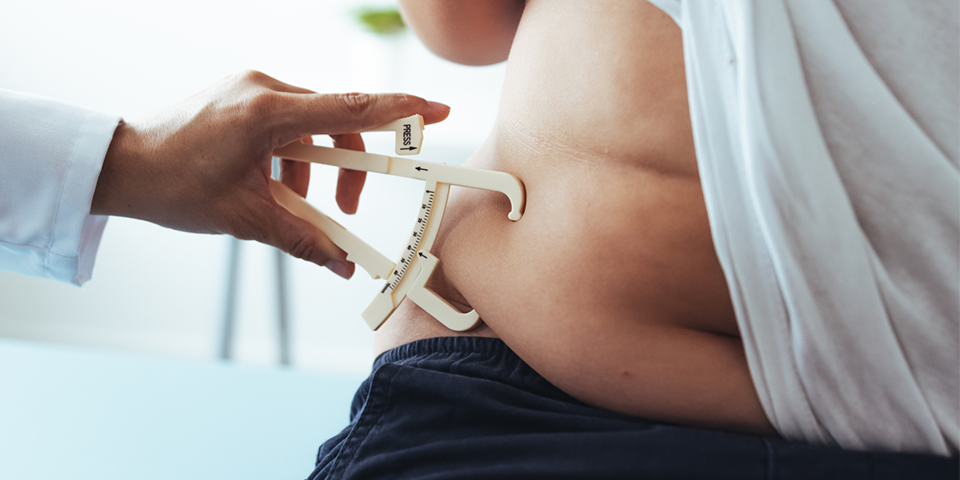Most of us think of fat (a.k.a. adipose tissue) as our body’s kitchen cabinet — a storage system for excess calories that we can dip into if we find ourselves in a pinch, or on a long hike without trail mix. While that is partly true, there are different types of body fat that serve various purposes.
So if you’re hellbent on losing body fat or maintaining a low body fat percentage, you might be inhibiting some of your body’s normal functions, like blood circulation and repairing and building new cells.
“Fat is one of the main building blocks of a living, functioning person,” explains Dr. Gillian Goddard, M.D., a general endocrinologist and adjunct assistant professor of medicine at NYU Langone Hospital. “Fat is definitely not just an inert storage for excess energy or excess calories.”
Learn about the role of body fat and how its various types differ.
1. White Fat

“White fat cells are large blobs with a big lipid (fatty) droplet in the middle and a little rim of cellular machinery,” Goddard explains. White fat is the type that mostly provides storage for excess energy.
There are two forms of white fat that you’re probably familiar with: subcutaneous and visceral.
Subcutaneous fat

For most people, subcutaneous fat is primarily made of white fat cells and is the layer of adipose tissue just under your skin. It’s mostly found in your arms, legs, and belly, storing excess calories and helping keep you warm like a natural layer of insulation.
“When you maintain a healthy body weight, subcutaneous fat does not tend to be metabolically deleterious or contribute to insulin resistance,” says Goddard. In line with the body positivity movement, it’s totally possible to have curves and be fit.
That said, if you’ve ever seen a picture of yourself and thought twice about posting it because of dimply-looking skin on your legs (a.k.a. cellulite), subcutaneous fat is to blame. Cellulite occurs when fat pushes through the connective tissue beneath your skin.
Visceral fat
If you want to brand one type of fat as “bad fat,” visceral fat or deep fat would be it. It’s made entirely of white fat cells and forms in your abdomen and around your organs. Having some visceral fat is normal, but excessive amounts can increase your risk of diabetes and other serious ailments, such as liver dysfunction.
“Visceral fat is one of the biggest contributing factors to health implications deriving from excess body fat,” says Goddard.
Perhaps the clearest indication of excess visceral fat is having a hard “beer belly,” but you should also pay attention to waist size. If you’re a woman with a waist circumference larger than 35 inches or a man with a waist circumference larger than 40, you likely have enough visceral fat to negatively impact your health.
2. Brown Fat

One of the biggest changes in defining the types of body fat over the past decade — and potentially the most confusing — has been the addition of a new category: brown fat.
Compared to white fat, brown fat cells have a small lipid droplet and much denser cellular components, which is why they appear brown. Those components include mitochondria, where fatty acids and glucose (sugar) are burned, producing heat.
Contrary to all of your preconceptions about lazy fat cells, this is a metabolically active type of fat, which is currently being studied for its potential use in treating obesity.
“In the past, it had been thought that only infants had brown fat,” explains Goddard. “However, adults have brown fat as well.” Brown fat helps regulate body temperature, which is why babies have so much of it. But once you develop muscles to help keep you warm, you lose most of this “baby fat.”
In adults, it’s found in the areas where your neck connects to your torso, above your clavicle, and down the spine. The amount also varies between individuals.
While this type of fat burns calories, it’s tricky to gain. It definitely doesn’t involve downing pints of ice cream, unfortunately.
“Researchers have found that exposing yourself to cold temperatures can help build it up,” says Goddard. But it’s not quite as simple as going for a run on a cold morning in shorts — or standing in the freezer section debating ice cream flavors. Some studies have found protracted exposure to temperatures of 60 degrees or less can trigger its production.
3. Beige Fat

When it comes to the adipose spectrum, beige fat occupies a kind of gray zone. Research suggests that mice are able to convert white fat cells into what’s known as beige fat, and that this “browning” of white fat cells might also happen in humans.
Typically found in pea-size deposits near the collarbone and spine, beige fat is like brown fat in that it burns calories and produces heat. But also like brown fat, beige fat is a relatively recent discovery and much about it remains unknown, says Goddard.
